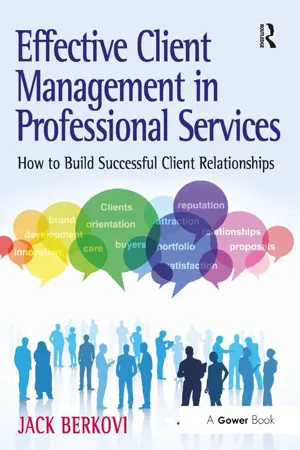Business
Business Development
Business development involves activities and initiatives aimed at creating and implementing growth opportunities within an organization. This can include identifying new markets, forming strategic partnerships, and expanding product offerings. The goal of business development is to drive sustainable growth and profitability for the company.
Written by Perlego with AI-assistance
Related key terms
3 Key excerpts on "Business Development"
- Martin Austin(Author)
- 2016(Publication Date)
- Routledge(Publisher)
1The Role of Business DevelopmentDefining Business Development
What is ‘Business Development’? This is usually the first question I have to answer whenever I’m asked what I do for a living by people outside the pharmaceutical industry. The answers I try to give are often tailored to the audience and what they are likely to quickly understand from their own experience. However, as few people have any idea that such a role exists beyond some hazy idea of marketing they usually smile politely and suddenly remember there is someone on the other side of the room to whom they must say hello immediately. So a definition of Business Development, at least as I have seen it performed since it comes in many different guises, will be useful. I define it as ‘any activity that alters the status quo of the business’. This includes activities such as:• planning • adding for growth • subtracting for profit • business process improvement • competitive awareness and advantage.Planning is a central activity to Business Development because, as a friend once told me, ‘There is no worse combination than great tactics and a lousy strategy – you just make things worse faster.’ In order to plan well, the business developer will need to have or obtain a number of skills and resources and these will be the subject of later chapters. However, a base set of skills for the business developer include being well organized, having a good breadth of knowledge, imagination, being good at analysis in different forms and having good communications skills, particularly listening and interpretation. Good organization means not just being able to collect information but to collate it, recall it and relate it. I have had the advantage of having worked briefly in IT with database designers and seen how the discipline of having a process for each of these activities creates a systematic approach. These processes can be made into a computer program. Addressing the information needs of planning in a systematic way brings organization to the planner and helps in structuring their communications to their own organization and to their counterparties in any negotiations.- eBook - ePub
Effective Client Management in Professional Services
How to Build Successful Client Relationships
- Jack Berkovi(Author)
- 2016(Publication Date)
- Routledge(Publisher)
Best practice Business Development can be defined as the approach used by a firm’s people to identify Client issues and create solutions. It is often said that marketing has the role of analysing markets and targeting strategically important sectors and prospects, thus ‘opening doors’ for business developers to follow up and ‘close’ on a commitment from a prospective Client. The Business Development function and culture are still relatively new to professional services firms but is growing in importance. Some firms have a team that is dedicated to Business Development. Its purpose is usually to focus sales resources on specific target Clients or prospects. Experience shows that in some professional service sectors there can be a potential 20 per cent ‘churn’ rate among the Client base. It can take up to 10 productive meetings over an 18-month period to win a new Client. This means that adopting a co-ordinated and sustained approach to Business Development is essential. The most enlightened firms have stimulated and developed a Business Development mind-set and collaboration across all Client-facing functions.Strategic marketing plans are prepared to attract these prospects and Clients through various tactical activities. The leads generated by these marketing activities are then followed up and qualified by Business Development people. Prior to a meeting with the prospect or the Client, many firms sets up an internal meeting to discuss their potential and agree a plan of action to convert the opportunity into business. The person responsible for Business Development then helps fee earners to retain and grow business with the Client. As mentioned in earlier chapters, the aim is to develop a portfolio of loyal Clients who consider the firm as its trusted adviser.As it is not possible to resource a Business Development programme to cover all of your existing Clients, it is important to have distinct programmes to grow existing Clients and to pursue new Clients. With existing Clients it’s best to focus on those that are most likely to yield the highest returns for the time invested. Some firms call these key or strategic Clients. Members of the Business Development team are expected to be well-versed in consultative selling which involves a detailed analysis of the prospective opportunity prior to contact and preparation of an agreed pursuit plan.A focused programme requires some form of strategic Client planning and a managed pipeline that shows the flow of opportunities from initial enquiry to conversion to business. Recent research by the UK Financial Times - eBook - ePub
Technical Training Management
Commercial skills aligned to the provision of successful training outcomes
- (Author)
- 2019(Publication Date)
- BCS, The Chartered Institute for IT(Publisher)
5 Business Development AND MARKETING MANAGEMENTBuilding a training business and managing its success Establishing, growing and maintaining a training business as it moves forward requires strong skills in Business Development and awareness of marketing management. This chapter looks at the roles and responsibilities of a Business Development manager (BDM) in terms of the activities required to develop and grow the business in line with the agreed strategy.Sales and marketing components of Business Development are also covered. The sales element covers discount policies, vendor specific objective evidence (VSOE), attach rates, and competitive and tactical strategies. The marketing element covers demand and lead generation, promotional materials and the implementation of customer, advisory and reference programmes.As new technologies enter the training sphere, they have the potential to influence the way in which organisations gain a competitive edge through disruptive business growth. This is briefly discussed at the end of this chapter.ROLES AND RESPONSIBILITIESSales and Business Development are often considered to be one and the same in terms of selling an offering to a customer. The reality is that they are different: sales provide the connection between an organisation and its customers regarding the positioning, presenting and selling of training, whereas Business Development refers to activities based on expanding the training organisation’s reach into new and existing markets – for example, forming partnerships with other businesses to sell or include offerings that complement each other or provide greater market reach and sales coverage.The BDM role is a combination of quality management, strategic analysis, marketing management and sales. The objective is to identify new business opportunities, expand market share and develop partnerships to generate new and increased revenue.
Learn about this page
Index pages curate the most relevant extracts from our library of academic textbooks. They’ve been created using an in-house natural language model (NLM), each adding context and meaning to key research topics.


